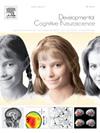青春期的安全学习促进了成年小鼠的恐惧调节
IF 4.9
2区 医学
Q1 NEUROSCIENCES
引用次数: 0
摘要
在敏感的早期生命发育时期,如青春期的经历对大脑成熟和长期的情感行为有深远的影响。虽然大量的工作集中在早期生活的逆境,但新出现的证据表明,积极的情感体验也可以塑造神经行为发展的轨迹。这项研究考察了雄性和雌性小鼠在青春期或成年期的恐惧条件反射或歧视性条件反射(即安全学习)的经历如何影响一个月后的恐惧行为和对焦虑环境的参与,当青少年长大成人时。无论在哪个年龄,无论效价如何,先前的条件反射(恐惧和安全训练)都会促进后来对新线索的恐惧泛化。相比之下,青春期的安全学习带来了持久的好处,导致成年后恐惧表达的减少和灭绝记忆的增强,而成年期的类似训练提供的保护作用有限。在高阶加迷宫中的行为显示,所有先前条件训练的动物(包括恐惧训练组和安全训练组)的运动都增加了,安全学习减少了迷宫中最初的冻结,并加速了最初从放置臂重新定位的速度。本研究中的性别差异不大,与年龄的相互作用有限,在实验阶段对训练相关结果的影响最小,这表明条件反射对后期情感调节的影响是强大的,并且在性别中广泛保守。总的来说,这些发现强调了青春期是一个敏感时期,在此期间,安全学习可以形成情感调节,并可能缓冲以后生活中的病理性恐惧反应。这项工作提供了对发育机制的深入了解,可能为焦虑等精神疾病的早期干预提供信息。本文章由计算机程序翻译,如有差异,请以英文原文为准。
Safety learning during adolescence facilitates fear regulation in adult mice
Experiences during sensitive early life developmental periods such as adolescence have a profound influence on brain maturation and long-term affective behavior. While substantial work focuses on early life adversity, emerging evidence suggests that positive affective experiences can also shape trajectories of neurobehavioral development. This study examined how experience with fear conditioning or discriminative conditioning (i.e., safety learning) during either adolescence or adulthood in male and female mice influenced fear behavior and engagement with an anxiogenic environment one month later, when adolescents had aged to adulthood. Prior conditioning (both fear and safety training) at either age, regardless of valence, promoted later fear generalization to a novel cue. In contrast, safety learning during adolescence conferred enduring benefits, leading to reduced fear expression and enhanced extinction memory in adulthood, whereas similar training in adulthood offered limited protective effects. Behavior in the elevated plus maze revealed increased movement in all previously conditioned animals (both Fear-trained and Safety-trained groups), with safety learning decreasing initial freezing in the maze and accelerating initial re-location from the placement arm. Sex differences in this study were modest, showing limited interaction with age and minimal impact on training-related outcomes across experimental phases, suggesting that the effects of conditioning on later affective regulation are robust and broadly conserved across sexes. Overall, these findings highlight adolescence as a sensitive period during which safety learning can shape affective regulation and potentially buffer against later life pathological fear responding. This work offers insight into developmental mechanisms that may inform early interventions for psychiatric conditions like anxiety.
求助全文
通过发布文献求助,成功后即可免费获取论文全文。
去求助
来源期刊

Developmental Cognitive Neuroscience
NEUROSCIENCES-
CiteScore
7.60
自引率
10.60%
发文量
124
审稿时长
6-12 weeks
期刊介绍:
The journal publishes theoretical and research papers on cognitive brain development, from infancy through childhood and adolescence and into adulthood. It covers neurocognitive development and neurocognitive processing in both typical and atypical development, including social and affective aspects. Appropriate methodologies for the journal include, but are not limited to, functional neuroimaging (fMRI and MEG), electrophysiology (EEG and ERP), NIRS and transcranial magnetic stimulation, as well as other basic neuroscience approaches using cellular and animal models that directly address cognitive brain development, patient studies, case studies, post-mortem studies and pharmacological studies.
 求助内容:
求助内容: 应助结果提醒方式:
应助结果提醒方式:


